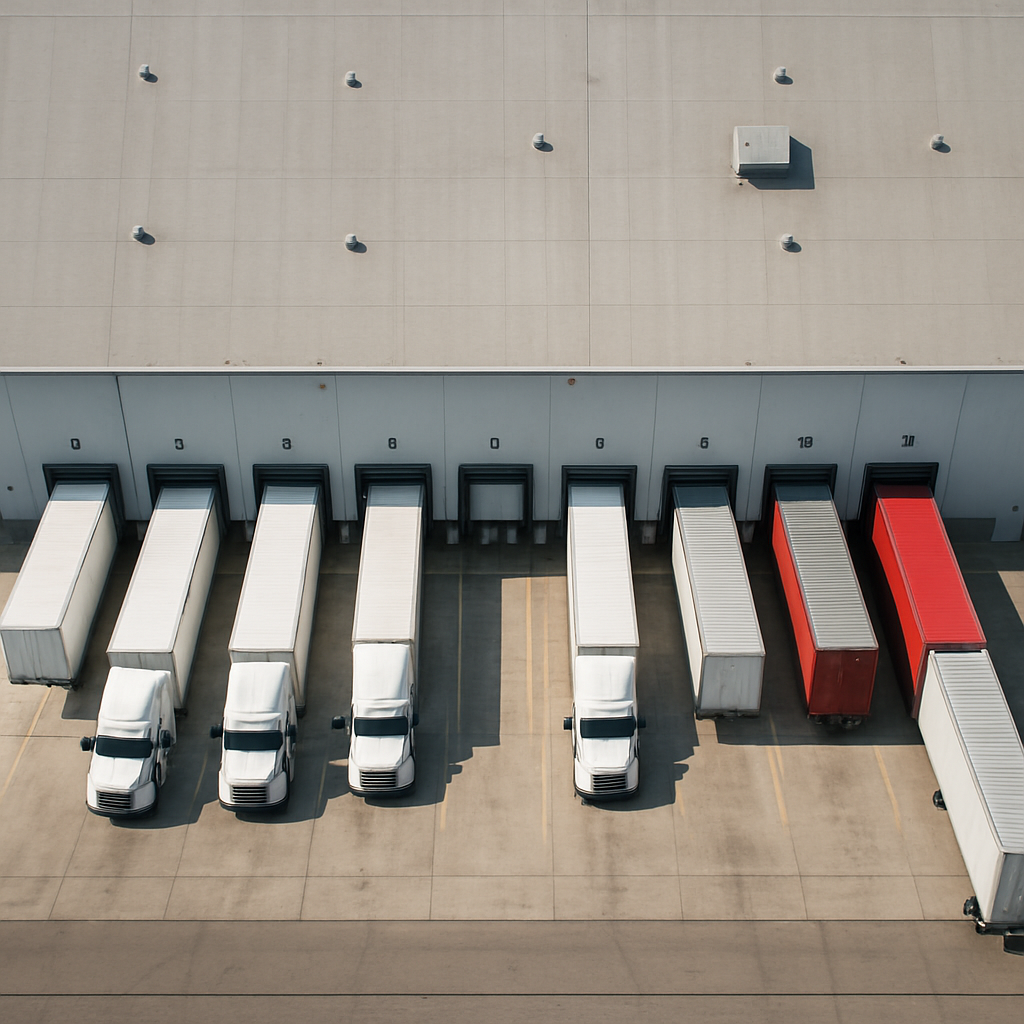
Every minute a dock door sits empty, money leaks from your operation. Idle doors may look harmless, but they’re a silent drain on cost-per-case, truck utilization, and labor efficiency. Whether it’s waiting on drivers, paperwork delays, or poor staging discipline, idle time equals wasted capacity—and in peak season, that waste compounds fast.
This article breaks down why idle doors happen, how to measure the loss, and the fixes that bring every door back to life.
In a typical grocery or retail distribution center, each dock door should be moving 1–2 trailers per hour at minimum during active shifts. When that door sits empty:
According to Inbound Logistics, unplanned dwell time costs U.S. shippers $1.1 billion annually—most of it from underutilized doors and poor scheduling visibility.
| Cause | Description | Result |
|---|---|---|
| Staging Mismatch | Freight not ready when the door is | Delayed loading, wasted slot |
| Carrier Delays | Late arrivals or incomplete paperwork | Door tied up, lost throughput |
| Poor Appointment Discipline | Doors booked but not released | Bottlenecks shift to yard |
| Labor Gaps | No loader when trailer is ready | Door sits cold |
| Visibility Lag | Supervisors unaware of idle status | Lost minutes turn into lost shifts |
When these issues converge, you don’t just lose time—you lose flow.
Start by tracking Door Utilization Rate (DUR):
Formula:(Hours Door in Use ÷ Hours Door Available) × 100
A healthy DUR is 80–90% during active shift windows.
Every 5% drop below that equals thousands in wasted labor hours per month.
To visualize the loss:
Static spreadsheets or carrier call-ins are throughput killers. Instead:
Dynamic scheduling keeps the flow continuous—and removes “ghost doors” from the rotation.
Idle doors often come from poor balance between inbound unloads and outbound loads.
Balanced doors = continuous motion.
Every empty door can usually be traced back to poor staging.
Even small layout tweaks can drive double-digit gains in throughput.
Track these KPIs daily and post them at the dock:
| KPI | Target | Purpose |
|---|---|---|
| Door Utilization Rate | ≥ 85% | Measures flow efficiency |
| Average Door Idle Time | < 5 min per hour | Detects bottlenecks |
| Truck Dwell Time | ↓ 10% weekly | Prevents detention fees |
| Staging Ready Time | ≥ 95% | Confirms dock readiness |
| Cost per Case | ↓ quarter over quarter | Ties dock efficiency to bottom line |
These metrics, when reviewed at shift huddles, keep accountability on the floor—not in the office.
Supervisors must have both visibility and authority to keep doors turning.
When you measure what matters and let your leaders act, idle time becomes rare time.
Idle doors aren’t a scheduling problem—they’re a visibility problem. When labor, staging, and scheduling all operate in sync, every dock becomes a profit center.
The best facilities don’t run harder—they run tighter. And that’s how you keep every door—and every dollar—moving.
Q1: What’s a healthy dock utilization rate?
80–90% during active shift hours is ideal for balanced throughput and labor efficiency.
Q2: How can I calculate the cost of idle doors?
Track door utilization and multiply lost door-hours by your average labor cost per hour and cost-per-case impact.
Q3: What’s the fastest fix for idle dock doors?
Tighten staging readiness and enforce appointment discipline. These two account for 70% of idle door issues.
Q4: How does managed labor help dock utilization?
Managed labor teams provide on-floor supervision, cross-trained associates, and accountability metrics that drive door turnover.
Q5: What technology improves dock visibility?
Digital scheduling, yard management systems (YMS), and real-time dashboards integrated with your WMS or TMS.
👇📅 We're here to help. There's no pitch - just a conversation. 📅👇
In any market, your supply chain can make or break your ability to compete well. Don't leave that to chance. We can help you create a stronger operation, so you never fall behind the competition.
Stop worrying about labor challenges and start enjoying a safe, lean, and rock-solid supply chain.
(800) 849-3132 | © FHI. All rights reserved.